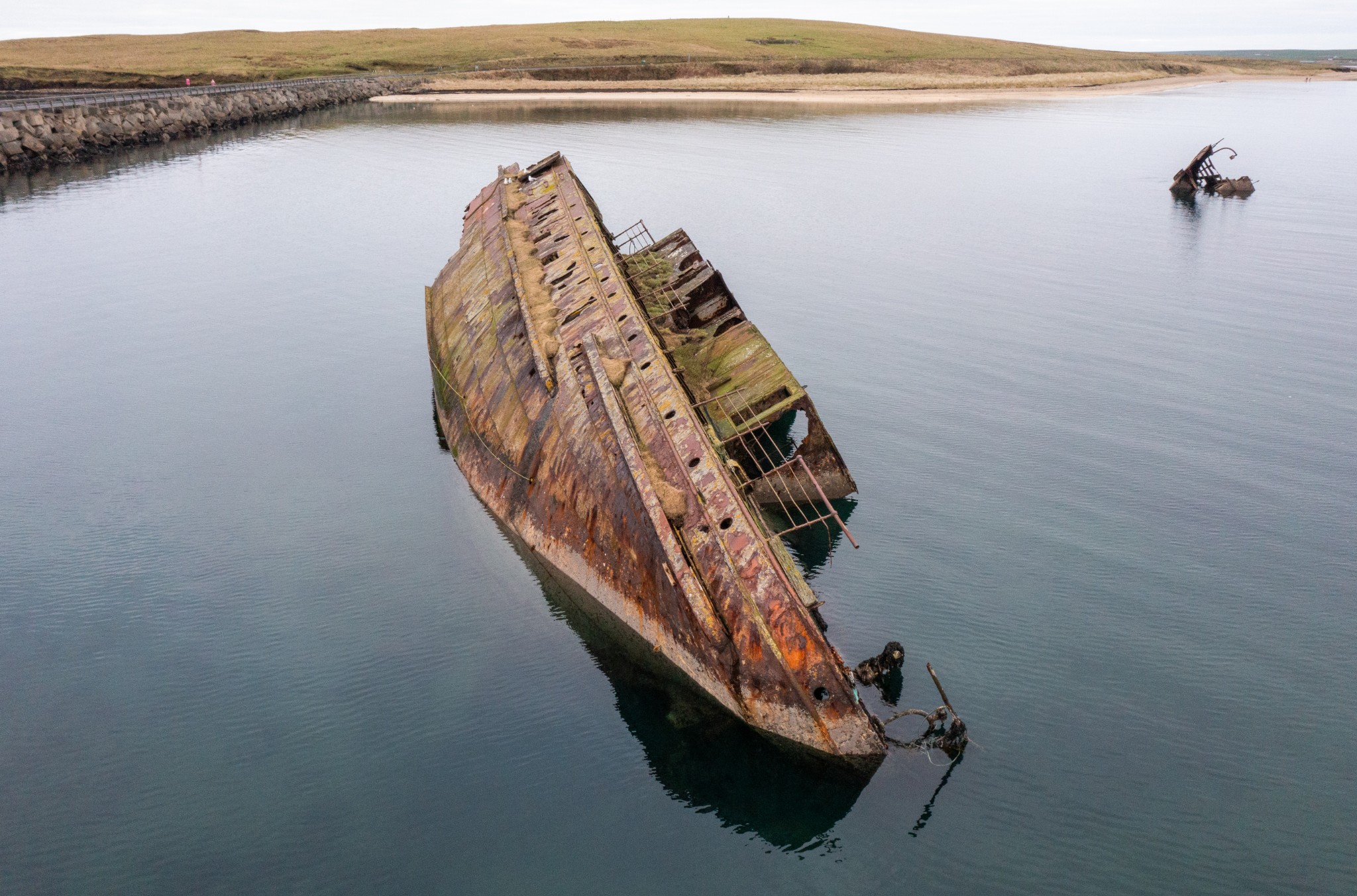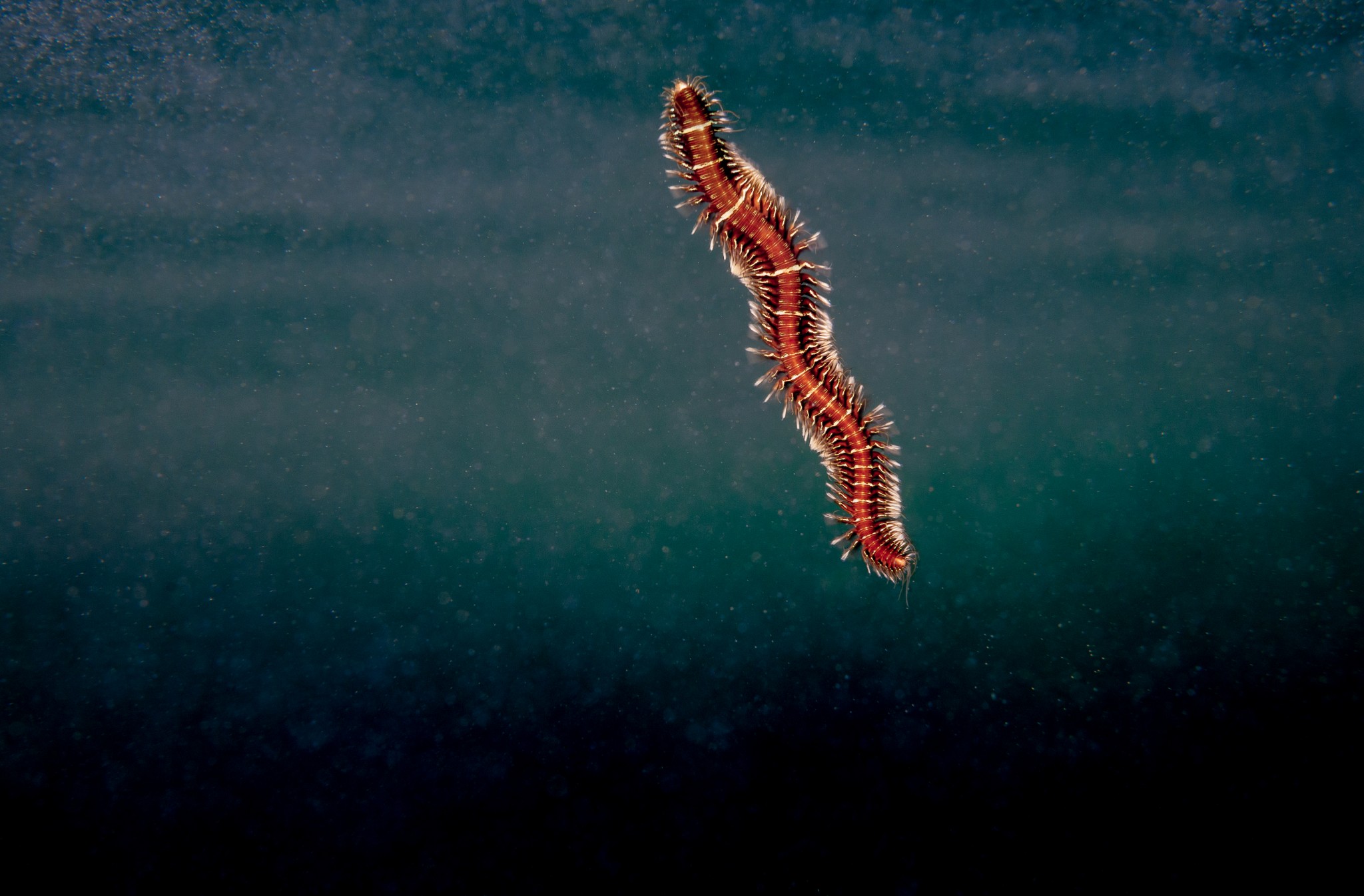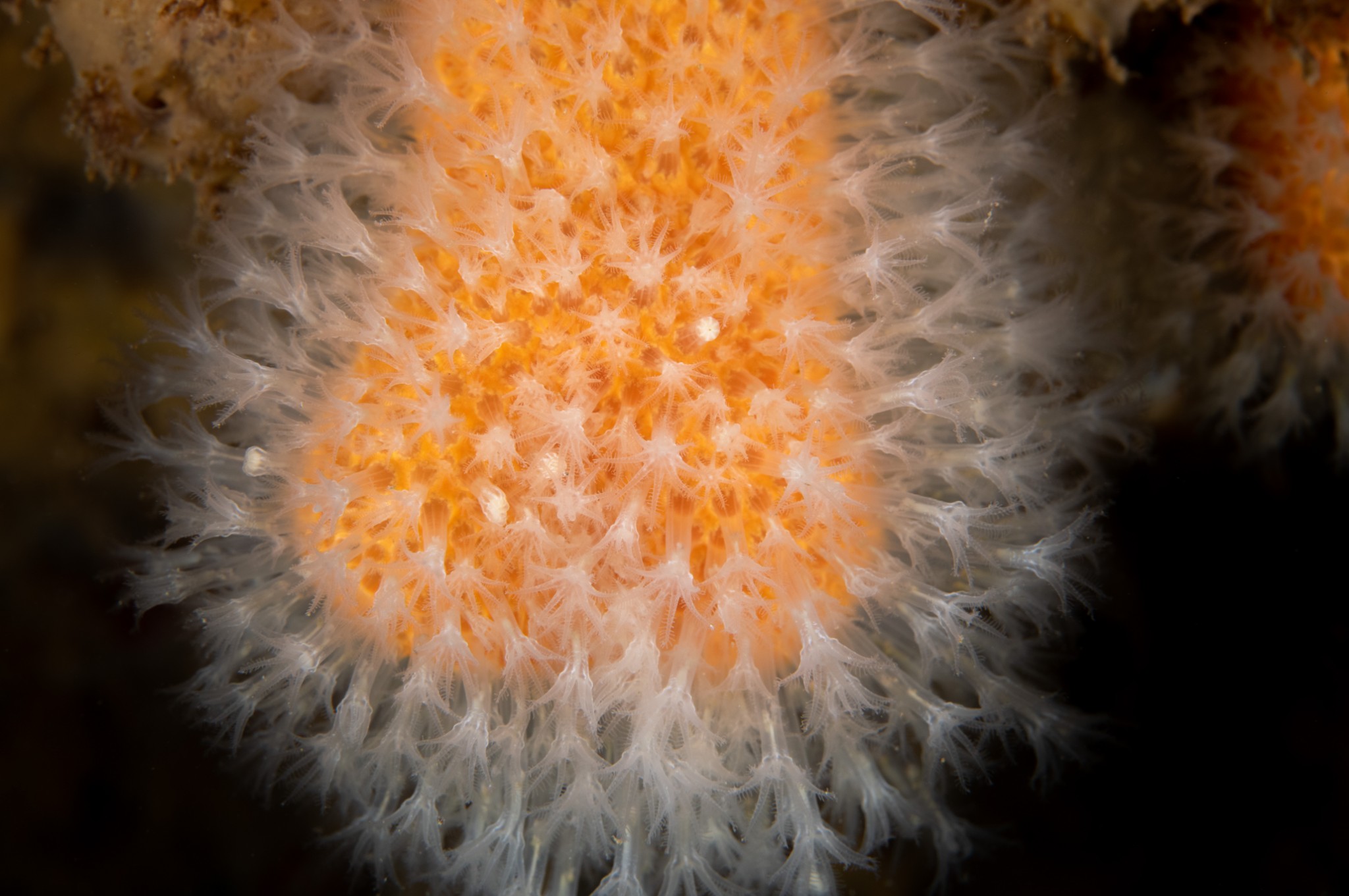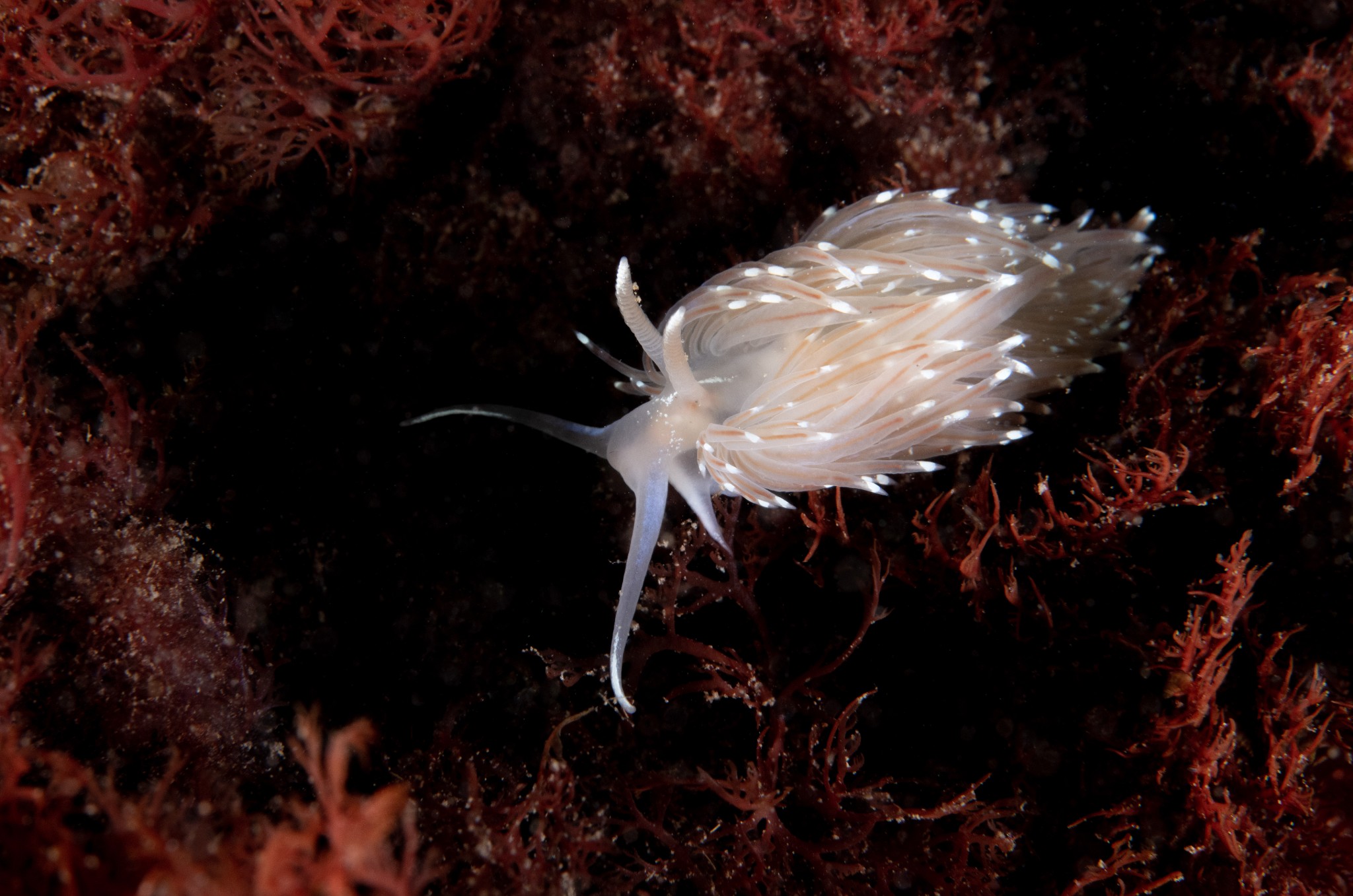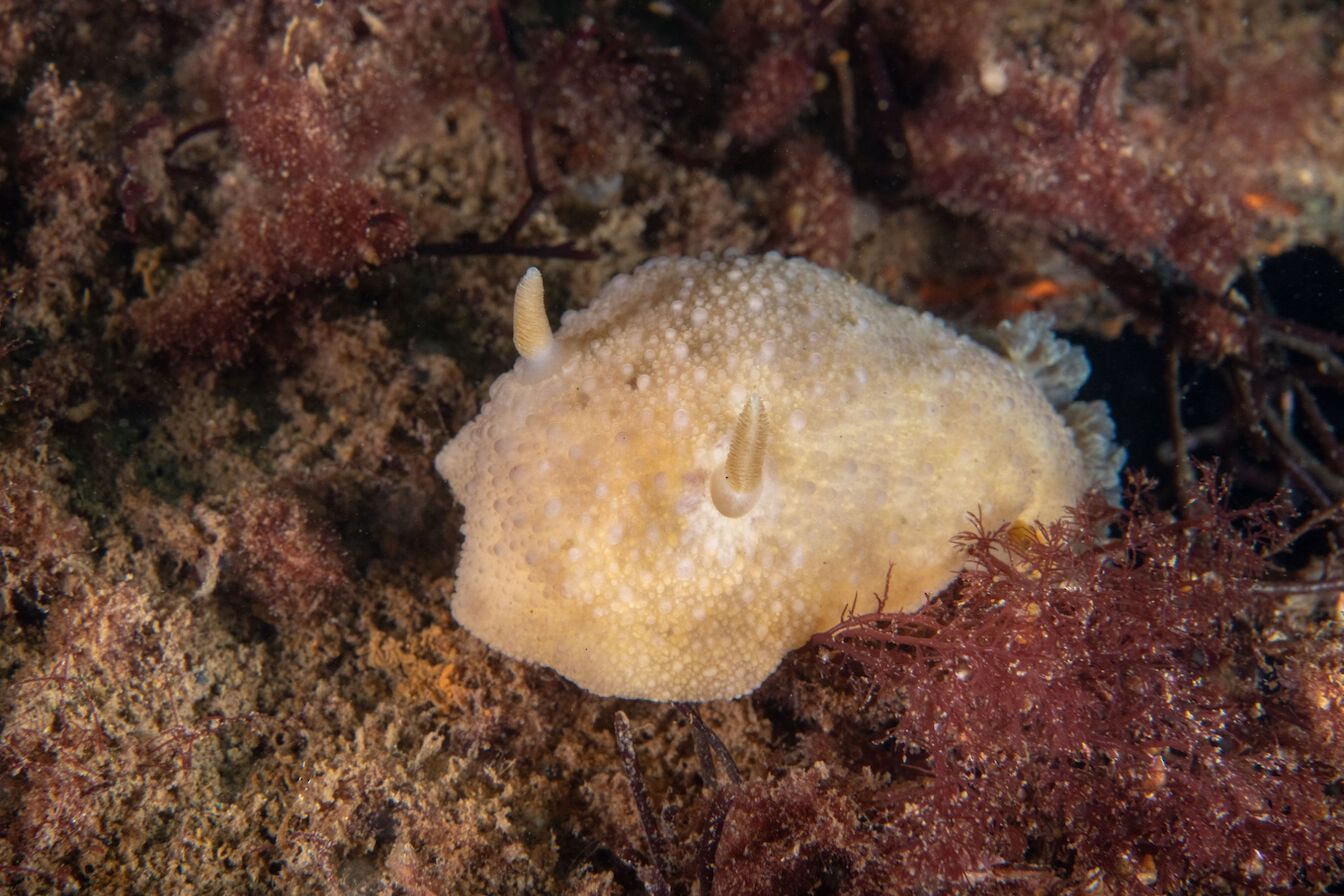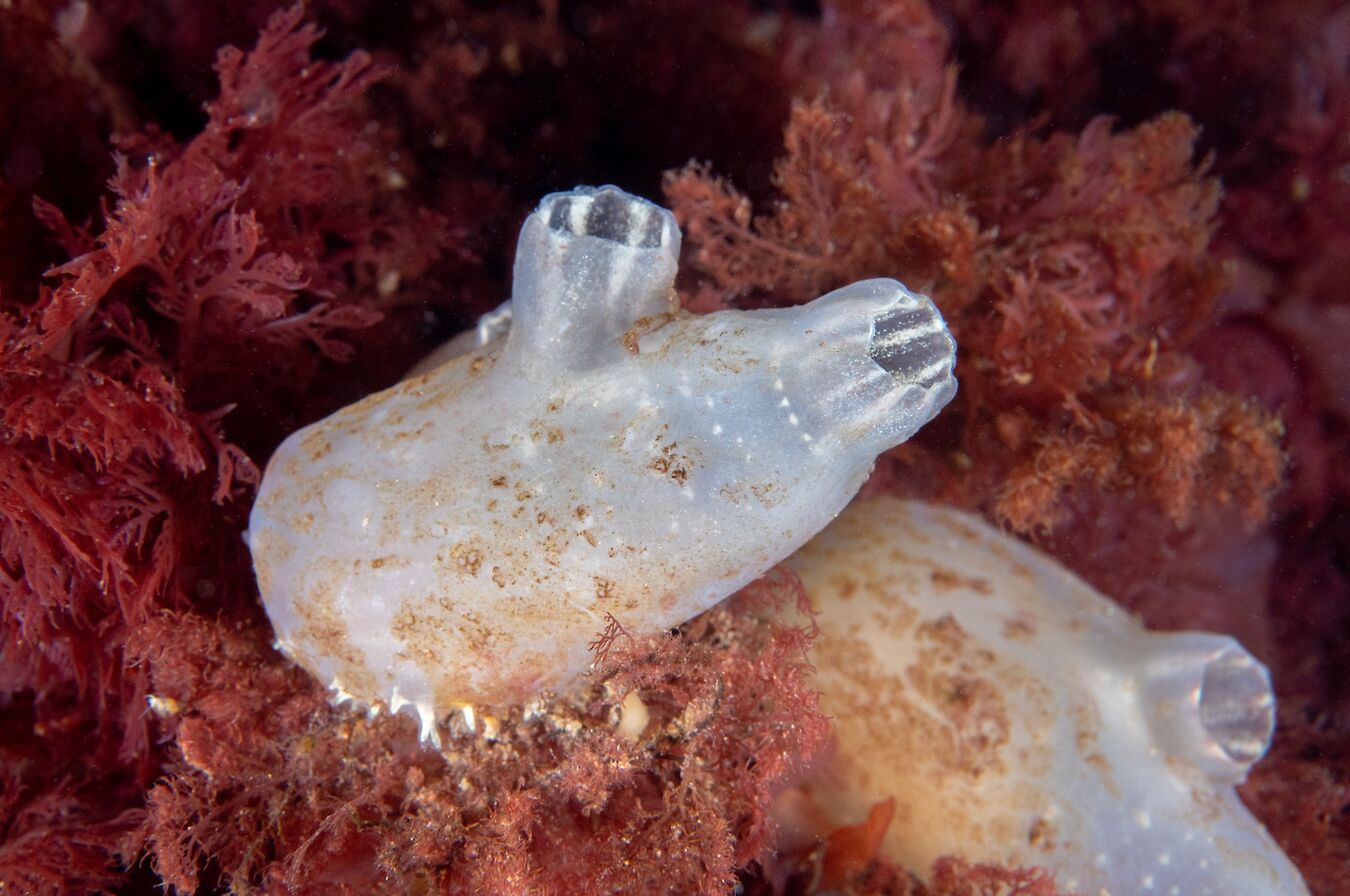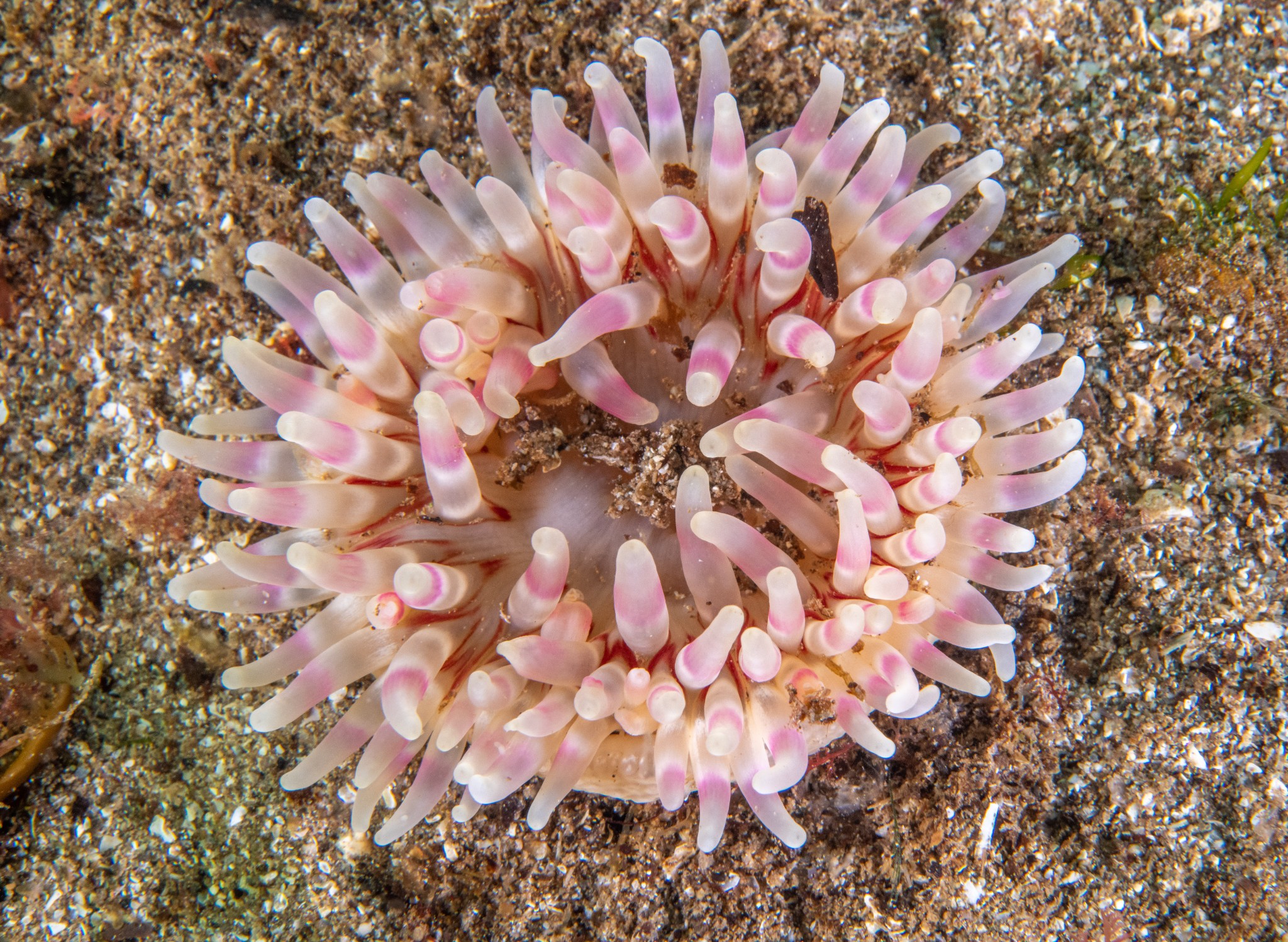I promise I haven’t completely lost the plot. I’ve recently been out looking for aliens, and guess what, I found loads of them!
I haven’t however been looking to the night sky but rather under the waves - more specifically around the wreck of the SS Reginald which lies in very shallow water parallel to Churchill Barrier number three in Weddell Sound. This site is particularly good for seeing creatures beyond our imagination, animals to really marvel and wonder at. Ok, I’m maybe hamming up the alien theme a little, but coming back down to earth for a moment there really are some interesting species here.
To Orcadians, seeing large shipwrecks close to shore has always seemed pretty normal, something we have grown up with. But far from being complacent, every time I drive over barrier three, I always think how cool the Reginald looks. Two sections are visible, the large prominent stern section half in and out of the water and a small section of bow a little further north.
A section of old pontoon used to moor small fishing boats was removed some years ago so it’s now possible to fully see the beautiful sweeping curve of the stern. Fulmars regularly rest on the swathes of grass clinging to the ‘top’ of the wreck as do rock doves, whilst a small starling murmuration flies overhead here in winter, the wreck innards providing safe shelter.
The SS Reginald was originally built in 1878 by London & Glasgow Engineering & Iron Shipbuilding Co. Ltd (quite a mouthful!). Having been built for the Waterford Ship Company she was sold to the Clyde Shipping Company in 1912. Shortly after being purchased by the Admiralty in 1914, she was sunk as a block ship on the 15th of September 1915.
Now she is a short swim from the south end of barrier three and this is the best place to start exploring. I dive and snorkel as much as I can using a wetsuit rather than a drysuit. I own both but I feel much less restricted and cumbersome in the wetsuit. By this time of year however I’m thinking how much longer I have before the water temperature forces me into the drysuit.
Recently I spent some time filming grey seals in the shallows and I was in the water for 90 minutes. This was when my extremities finally started complaining and sent me heading back for a hot chocolate. I do wear a very thick wetsuit though - technically it’s a ‘semi-dry’ suit but that’s just a posh name for a very thick wetsuit. In my case it’s a Fourth Element 7mm suit with a 3mm bib and integrated hood. This means by the time I’m zipped up I have 10mm of neoprene protecting my chest and torso with no cold flushing of water into the suit.
The downside to all that neoprene is that I’m very buoyant and without adding a lot of lead to my weight belt I wouldn’t be able to get underwater. In saying that, as I walk slowly backwards (the easiest way to manoeuvre wearing fins) into the shallows I can feel the water seep into my boots and although not cold the sensation definitely heightens the senses.
It may surprise you to know that the average sea temperature around Orkney in September and October is around 12.5C, warmer in fact than early summer. This is really pretty pleasant compared to the ice cream headache your face receives when you go for the first dive of the year in early spring!
As I make my way towards the stern of the SS Reginald the upper water column looks quite milky, the result of all manner of things in the water like silt, detritus, and plankton. I can see something writhing in the water ahead of me and, actually below me as well. Just using the word ‘writhing’ makes me shudder a little and it did in the water too. The creature in question is a polychaete worm called Oxydromus flexous.
Presumably the flexous part of its name is derived from the very motion I can see in front of me as it curves and dances its way through the water column. It essentially looks like a marine millipede, its legs like tiny brushes. As interesting as it is, it’s triggered something of a negative response in me, I wasn’t overly fond of creepy crawlies as a child and this polychaete worm is definitely in the ‘crawly’ category!
The bulbous looking stern looms large above me, from this perspective looking like a cross between the ‘Nautilus’ from 20,000 Leagues Under the Sea and a ship from War of the Worlds. I know from previous visits that the stern is a particularly good place to see two-spotted gobies and sure enough there are a number of them here, always busy whilst a well camouflaged fifteen-spined stickleback slowly slinks back under the cover of nearby seaweed.
As I move north along the twisted superstructure, I can see the bright orange shapes of the knobbly looking dead men’s fingers attached to the rusting metal. Dead men’s fingers are a species of soft coral and can be white or orange in colour, both are the same species and often found side by side. The ones I can see have a soft looking ‘fuzz’ around them, these are the polyps it uses for feeding. This is likely the last time I will see these delicate structures as in winter the polyps are retracted and only appear again in early spring as the colonies start to feed again. During the winter these dead men’s fingers will look hard and rubbery.
When I reach the mid-ships, I’m essentially at the end of the wreck. Its interior is now partly visible but the sun must have gone behind a cloud. Gone are the rays of light shimmering through the water, it feels a little gloomy and the mood different.
But just below me I’m fortunate to see two different species of Nudibranchs or sea slugs. They are at opposite ends of the scale in terms of their size, the sea lemon Archidoris pseodoargus looks like a veritable monster compared to the delicate little Facelina bostoniensis which is slowly moving through some red seaweed nearby.
I had been warned and noticed the trait in other divers, that when you start to become interested in nudibranchs you can become somewhat obsessed. I’m not there yet, they can be a complicated group and I’m still at the marvelling at their oddity and beauty stage. I’d recommend the brilliant nudibranch ID guide compiled by local diver Alastair Skene which you can pick up in Stromness Museum.
These two nudibranchs couldn’t look more different. The Facelina bostoniensis is small and slightly translucent looking, its body covered in long ‘cerata’ with white spots on the end of each. I can’t help thinking this helps give it a slightly glamorous look. The sea lemon on the other hand, well, how can I be kind here…it can reach up to 12cm in length and its surface is warty and rough looking, its frilly gills are to be found at the rear of the animal. But on the positive side its two ‘rhinophores’ are beautiful structures, delicately whorled and the colouration on its mottled body is a wonderful pale yellow with soft shadings of lilac.
I’m now on the barrier side of the wreck and it’s time to start thinking about heading back in. I see some pretty sea squirts with their inhalant and exhaling siphons, they have a light dusting of silt on their white bodies. The numerous spider crabs here use this silty area near the wreck to their advantage, each individual I see is slightly differently decorated and adorned with different seaweeds in an attempt to blend in and evade predators.
I think I’ve fallen a little bit in love with spider crabs. I wonder if their territories are pretty localised as you often see very specific camouflage, then move 20 metres and the camouflage has changed to suit the surroundings.
As I watch one scuttle off, I see why it has good reason to be wary. A female eider duck dives under the surface and they love nothing more than taking a crab. You often see them juggling with them at the surface having brought one up, presumably they’re not that easy to deal with!
I get one last treat as I head out of the shallows, I see a dahlia anemone in the sand. A large anemone, its short, stout tentacles banded pink and white, it’s another impossibly beautiful creature to marvel at, but the pull of hot chocolate is stronger than my interest at this stage, and with my fingers finally losing their feeling, it’s time to leave the aliens to their world.
Find out more about Raymond’s work via his official website. You can also find him on Facebook, Twitter and Instagram.
